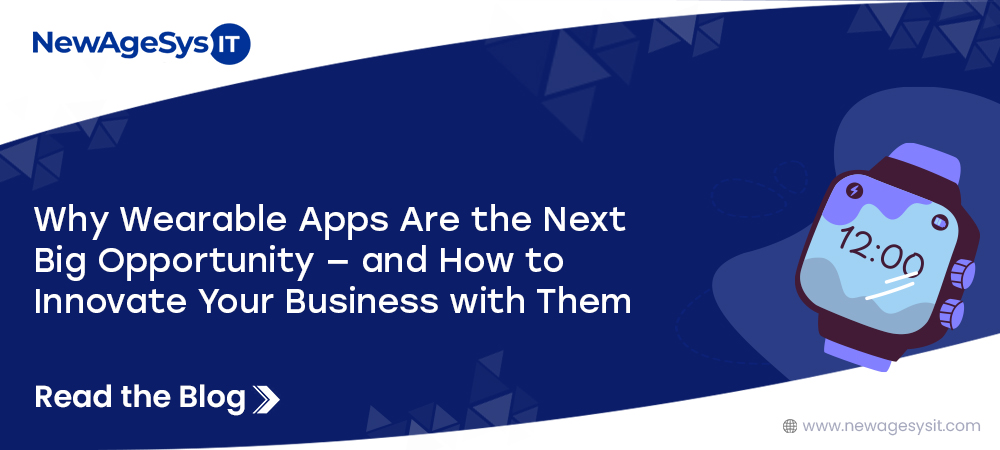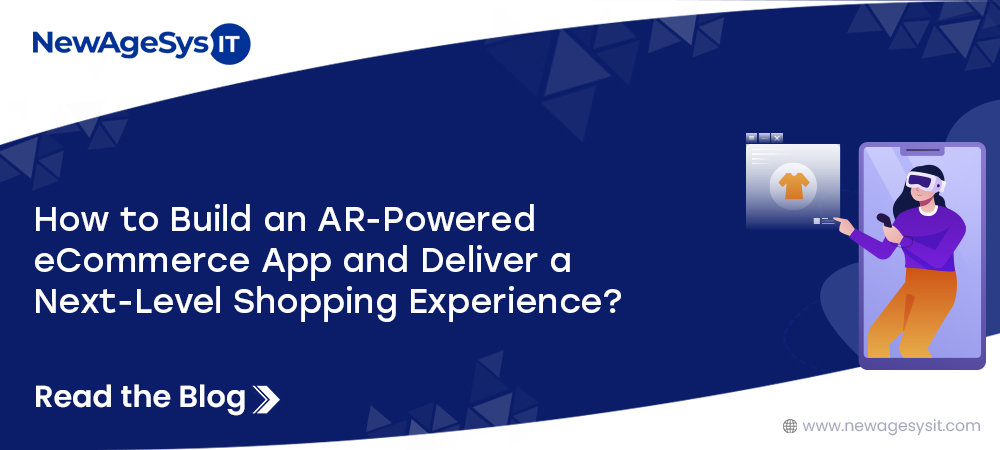Core Principles of Mobile and Web Application Development
Mobile and web apps have become an integral part of our lives, influencing everything from shopping and communication to entertainment, health management, and financial matters. Users now expect a seamless and engaging app experience.
As apps become more widely used, small firms and entrepreneurs will have the opportunity to compete globally. Still, there are millions of apps available, making it extremely difficult to stand out in a crowded market. Functionality alone is no longer sufficient for an app; it also needs to be user-friendly, entertaining, and offer genuine benefits to its users. To satisfy the changing expectations of customers, developers, and organizations are reevaluating their approach to app development and placing a greater emphasis on personalization and user-centric design.
With this guide, you’ll explore the journey from an idea to a successful launch and after that. Whether you are a budding entrepreneur or a seasoned developer, this guide will outline the latest trends, best practices, and strategies for engaging users, presenting a complete roadmap in the process of creating apps captivating and connecting with the audience. Following the road ahead, this guide will review the complexities of the app development process as well.
Transforming ideas into digital innovations: The art of app ideation
The genesis of groundbreaking Apps
Ever get that itch for an app that solves a real-life struggle? That’s where the magic begins! It’s all about striking a balance between wild ideas and what people need. We brainstorm like crazy, and every team member gets to chime in, no matter how wacky their thought might seem. Because they, the coolest apps often stem from simple solutions to everyday problems. It takes guts to turn those ideas into reality, but that makes them awesome!
Rigorous validation: Ensuring market fit
Following the conception of an app idea, prioritizing its validation becomes essential. This validation process serves two primary functions: confirming a genuine user need for the application and verifying market readiness for its introduction. To ensure the app resonates with its intended audience, developers employ various research methods. Surveys and focus groups provide direct feedback on user needs and preferences. A/B testing allows experimentation with different app features, revealing which functionalities resonate most strongly. Furthermore, scouring search engine trends and social media discussions can unearth valuable clues about public interest in the problems the app aims to solve. By incorporating these insights, developers can refine their concept and increase the likelihood of the app finding a receptive market.
Understanding the competitive landscape
Delving deep into market insights
Understanding the target audience’s behaviors, needs, and preferences is crucial for a successful app. Market research is conducted to understand the demographic, psychographic, and behavioral attributes of potential customers or subscribers, helping developers to customize the app’s features and personalize the user experience. Google Analytics and SEMrush tools can provide valuable information about potential users’ behavior, preferences, and engagement patterns. Effective market research validates the app idea and illuminates the path to making it more appealing to its target audience.
Navigating the competitive landscape
A comprehensive competitive analysis acts as a market map, illuminating the strengths and weaknesses of existing apps. Developers and entrepreneurs can leverage this map to identify gaps in the current offerings and unmet user needs. This analysis involves meticulously examining competitor features, user reviews, and marketing strategies. By doing so, they can position their app strategically, differentiating it through enhanced functionalities, a superior user experience, or innovative technology. Tools like App Annie and Sensor Tower offer invaluable intel – app rankings, ratings, and feature breakdowns – crucial for carving out a niche within a saturated market.
Integrating these elements into the app development process isn’t just about boosting success rates; it optimizes the path towards creating a user-centric product. Grounding the development journey in rigorous research, validation, and strategic analysis empowers developers and entrepreneurs. This comprehensive approach equips them to navigate the complexities of the digital landscape, ensuring their app not only launches successfully but thrives in the competitive marketplace.
Strategically planning your mobile app development project
Setting clear goals and objectives
Defining a clear and quantifiable set of goals and objectives—the foundation of success for any development project. This crucial step of the planning process ensures that all development team members have a shared understanding in terms of the direction the project is headed and the purposes for which it will be used. Whatever the objective may be—to tackle a certain problem, to tap into a new market segment, or rationalize the existing strategy—goals need to be clear and laid down.
The goals must fit the criteria of SMART: specific, measurable, achievable, relevant, and time-bound to get the best effectiveness. A benchmark contributes to providing a basis for the measure of progress and at the same time offers a base for the measure of ultimate success. It then brings clarity in the prioritization of features, guides design choices, and sees the project clearly through its different stages, ensuring every action taken directly contributes to the overarching vision of the app. It guarantees that each step made is in line with the greater vision for the app.
Detailed budgeting and timeline planning
It requires quite a significant level of time and capital investment to develop the app. Prudent budgeting and outlining of development timelines should, therefore, be put in place. In other words, budgeting involves a correct forecast of costs related to each stage of development, from the initial wireframes and research on user experience to programming, testing, and marketing. It covers everything that is predictable and unpredictable expenses and must be borne so that the project remains financially feasible during development. Similarly, timeline planning involves creating a realistic schedule for the project, identifying key milestones, and allocating sufficient time for each phase of development.
Deciding on the app type: Native, Hybrid, or Web applications
Whether to opt for a native app, a hybrid, or a web app will be one of the biggest decisions in any app development process. The decision will largely determine its design, functionality, user experience, and development cost. On the contrary, the best performance and user experience are offered by native apps, yet they require more time and resources in development.
Hybrid apps balance between them; they allow cross-platform development from a single code base. It can save development time and cost with some performance and user experience nuances trade-offs. On the other hand, web applications are way cheaper, in the long run, to reach any device type with a web browser but compromise functionality and access to features offered by receiving devices. A decision in this regard must be based on a very clear understanding of what the target audience wants, what app features are desirable, and if there are any project budget or timeline constraints.
Strategic plan formulation should be included not only in the setting of the goals but also in budgeting, and choice of the app type, among other very fundamental issues that touch on the development of the project. The same outlines set up an effective guide for the development team amidst the complex process of app creation and, at the same time, enable focus on achieving clarity towards the goal of delivering an application that matches the customers’ requirements. By making better-informed choices at the early stage, developers can optimize their efforts and ensure that the applications produced will be not only of commercial success but can stand the test of time as well.
Understanding the financial landscape of mobile app creation
Overview of app development costs
For individuals embarking on the journey of developing a digital application, gaining an understanding of the financial landscape is fundamental. The spectrum of costs associated with app development can stretch significantly, influenced by factors such as the app’s complexity, the platforms selected (iOS, Android, or both), design specifications, and the developmental approach (be it native, hybrid, or web-based). The gamut of initial expenses typically spans market research, user experience (UX) design, app programming, and quality assurance testing, alongside post-launch maintenance and updates.
Furthermore, budgets allocated to marketing and user acquisition endeavors play a pivotal role in shaping the overall financial blueprint. An early, comprehensive elucidation of these expenditures during the planning phase equips stakeholders with a clear perspective on the financial undertaking necessary to transition an app from its conceptual stage to market launch. This foresight ensures a judicious allocation of financial resources, covering all imperative development and marketing activities.
Factors affecting development costs and how to budget effectively
The total cost of app development depends on several important factors. The feature set: this is the most crucial part, as the more complex a feature is, the more work hours and higher skills are needed—therefore, it has a natural impact on the cost. This spectrum of choices native, hybrid, and web also carries with it a budget influence, with native being generally the most expensive due to separate development efforts for each platform. In most cases, the cost may even be way cheaper, depending on whether the development is done in-house or outsourced to a third-party agency, which has proved even cheaper to businesses that do not have an existing team of developers.
In general, when budgeting well during app development, emphasis should be laid on those features that pertain to user needs and business objectives by focusing resources on core functionalities that deliver the most value. The agile development methodology will also help in controlling costs since iterative development makes it easy to get feedback, and therefore, it will ensure that the direction the project is taking is on course with the user requirements and market needs. This transparent communication with the development team or the partner agency is key to avoiding any kind of scope creep that may arise out of a budget constraint and ensuring the project remains within financial boundaries. It is also a practical pool of money that ensures there are sufficient funds in the case of covering unexpected expenses that would keep a project moving normally in case of any unanticipated challenge.
Therefore, it requires strategic approaches toward budgeting and deep knowledge of factors that might be at play to influence development expenses. It can ensure the maximum chances of success of applications to be developed through the developers and businesses but within the financial limits by proper planning and prioritizing. It implies that appropriate management of the budget guarantees the financial viability and success of the app development project while competing in the vagaries of the digital market. Read in detail the cost implications and app development here.
Making the strategic decision: In-house development vs. Outsourcing
Evaluating the In-house Development Model Against Outsourcing: A Comprehensive Analysis
The choice between in-house development and outsourcing represents a crucial crossroad in any app development journey. In-house development ensures maximum control over the work process and the possibility of uniting team members under a single roof for immediate feedback and adjustment. As such, it is for highly customized projects and matters where keeping intellectual property private is essential. It also requires massive investments in the hiring process and onboarding, along with acquiring the infrastructure. By contrast, outsourcing a project puts one’s hands on the global talent pool and leads to cost opportunities, including the chance to hire more specialists from more specific niches, all without having to hire them full-time. However, it comes with the downside of being less manageable and may lead to communication challenges due to time zones.
Choose the right development partner if outsourcing.
When planning to outsource your app development, selecting the right development partner is the most critical decision that will determine your project’s fate. Your first step should involve describing your project requirements, goals, and budget, which will be your checklist when evaluating potential partners. Choose an experienced partner who has successfully developed various apps within your niche and technical capacity. A portfolio and client testimonials will provide better insight. Pay attention to their communication skills: response time, language, and preferred channels. Do not refrain from discussing their project management tools and techniques: choose a partner who aligns with your expectations. Ultimately, check the potential cultural fit, as it can impact your project success with your teams working together.
Managing an outsourced development project
Managing an outsourced development project is, therefore, strategic in communication and oversight. From the outset, clear lines of communication should be set up regarding check-ins and the frequency of status updates on the project. Project management tools like JIRA or Trello are some examples that can be used in an open way to manage tasks and track projects’ progress. Secondly, a strong project governance structure: charted clear roles, responsibilities, and escalation paths to address the issues promptly. Document everything that would be decided, changed, and agreed upon for referring. Build relations with the outsourced team, and treat them as an extension of your in-house team who can build a collaborative environment. Finally, be prepared to overcome cultural and time differences and challenges by using them not as boundaries but as assets that will guide you to gain the impetus necessary to further build your innovation and creativity journey in app development.
The decision between whether to go for in-house or outsourced development is a critical judgment that must be made concerning your specific project needs, budget, and timeline. Pre-planning and prior consideration in very clear communication ensure the success of the outcome by bringing about a collaborative environment between in-house development and outsourced project activities engaged toward the fulfillment of your project goals. It will be able to navigate through this complexity and deliver a product true to your vision, far beyond what the user expects through strategic alignment of the right development path and partners with sound project management practices. NewAgeSysIT can be your trusted partner in delivering top-notch app development services. With a decade of experience, we helped businesses to reach their customers through custom build applications. Hear from our clients!
Selecting the optimal technology stack for your mobile application
Assessing current technologies and frameworks
The most critical aspect of developing successful apps is the technology stack supporting it. Great caution is necessary while choosing the technologies and frameworks being used, not just toward tapping the current trends but in contemplation of which tools will be best suited to the functional, performance, and user experience goals of the app. It all requires a very honest look at what’s good and bad about each, considering, for example, development efficiency, community support, and long-term viability. Of course, all new trends regarding web and mobile application technologies, starting from the front-end framework, either React or Vue.js, to the back-end, like Node.js and Django, are now all on the table for developers. The information may lead to some guidance for the developers in determining decisions that may be most useful in their needs and goals for a particular project by understanding the abilities and limitations of each technology.
Matching technology stacks to your app’s requirements
Choosing the right technology stack is paramount, as it directly influences the app’s capability to fulfill its requirements and function optimally on the intended platforms. This selection process involves pairing the app’s functional needs and user experience goals with suitable front-end and back-end technologies. For example, a complex, data-heavy application might be best served by a powerful backend framework like Ruby on Rails, whereas a web app that requires high interactivity could benefit from the dynamism of Angular or React. The decision between opting for native development on iOS and Android or choosing cross-platform solutions like Flutter or React Native should be informed by factors including the target audience, performance expectations, and the development timeline. Importantly, it’s essential to choose a technology stack that meets the app’s current demands and supports its potential for future growth and evolution.
Future-proofing your app with scalable technologies
In the current fast-paced tech environment, future-proofing should be every app developer’s top priority. To accomplish this, all technologies selected need to not only benefit the app now but also give room for its growth and evolution in the future. App scalability is crucial, as the chosen tech stack should facilitate the app’s ability to handle more users and additional features without demanding extensive revisions. This often involves leveraging SaaS services and cloud solutions such as AWS or Google Cloud Platform, which are highly scalable and provide a compact, API-driven platform. Additionally, future-proofing entails choosing technologies backed by strong and vibrant communities and up-to-date development systems to protect against obsolescence. This approach ensures that the resulting app can outgrow current user requirements and remain relevant and competitive over time.
Choosing and evaluating appropriate technologies for the app development life cycle is a tricky balance between keeping up with current technology trends and predicting future ones. In such a changing, complex landscape, developers will have to opt for their technologies strategically: they must strike a good balance between performance, scalability, and long-term support. App stack should be chosen with much precision so that it can serve the goals of the application; a developer should use this while laying a sturdy foundation to create applications that will remain resilient and continue engaging and satisfying users throughout the stages of technological advancement.
Human-Centered Design Principles for Mobile Applications
UX/UI design
Developing an app that will facilitate good user experience (UX) calls for observing some core principles of the design. The principles will help guide one on the design process so that the developed app is friendly and easy to use, not just pretty. Some of them include simplicity and the fact that the interface of the application is clear and not overloaded so that users would have a minimum of difficulty in performing various tasks. The consistency of the design elements—fonts, colors, button styles—allows people to get into a rhythm and makes the app more predictable, hence easier to navigate.
Another very important principle is responsiveness because the app should give a user the same experience on different devices and offer smoothness in different screen sizes. Therefore, the use of these mechanisms is paramount, as will ensure that users’ points of interaction give immediate and meaningful feedback that will further make the users engaged. Adhering to these UX/UI design principles thoughtfully can take the user interaction with the app to the next level, further bringing increased satisfaction and retention among the users.
Tools and resources for app designers
The field of dynamism is that of app design. If you have the wherewithal to do your work in terms of resources and tools, then the kind of output you are bound to produce—be it quality or quantity—has to make a difference. Strong tools—Sketch, Adobe XD, and Figma— for wireframing and prototyping. They will help you experiment with lots of different types of layouts and iterate the designs quickly. The tools provided support the design processes of collaboration. It means the teams can work together by sharing information regarding feedback in real-time and the design process remains consistent, one after the other.
Designers get Photoshop and Illustrator, considering they offer the most powerful capabilities in image editing and vector graphics. Further, through Canva’s online site, one might even gather inspiration and be current with design and innovation news from the international design community. These are important in helping mobile app developers come up with interfaces that are well-designed, attractive, and aesthetically appealing, able to make them perform effectively within the highly contested app market.
Knowledge alone does not give rise to creating a user-engaging app; it is rather a clear understanding of UX/UI principles and strategic use of design tools and resources. A simple, consistent, responsive one that puts the needs of the users first would help developers greatly. This, coupled with a robust set of design tools, equips the designers with all they would require to bring to life their creative visions in such a way the application not only looks good but also ensures users have a seamless and pleasant experience while running the product. Thoughtfully designed with the very latest tools, keen critical eyes are focused on design’s critical role in app success, differentiating apps as a key factor in the app ecosystem.
Essential Phases in the Mobile Application Development Process
An outline of the development process
Different methodologies define the development phase due to their unique approaches to tasks and timeline management. Agile and Waterfall stand out as two primary methodologies, each with distinct metrics, execution styles, and levels of flexibility. Agile is notable for its iterative development approach, dividing projects into smaller parts or sprints that function as rapid cycles. This method is evaluative and adaptive, designed for quick responses and constant modifications, making it highly responsive to process changes and user feedback. Agile fosters a teamwork-oriented environment with a focus on adjusting tasks as needed.
On the other hand, the sequential and linear Waterfall methodology mandates the completion of each phase before progressing to the next. It is associated with structured frameworks and processes that are suitable for projects with well-defined and clear requirements. However, it lacks the agility to allow modifications once a phase has started. The choice between Waterfall and Agile hinges on the project’s complexity, required flexibility, client demands, and the team’s work attitude.
Selecting the right technology stack
The stack of technologies that should be chosen needs to be right in consideration of the performance, maintainability, and scalability of the app. The technology stack includes all technologies applied in building an app, which can take the form of applied programming languages, frameworks, databases, and server technologies. The criterion for this choice is even more applied and may be guided by either the conditions of real-time data processing, complexity of interaction with a user, or integration with third-party services. The choice should be guided by factors such as the expertise of the development team, community support of the technologies, and future projections of growth. For instance, in this stack, developers would use React or Vue.js in the front end and Node.js in the back end to enable them to create fast, scalable web applications. In this regard, native development is the best approach for applications requiring high performance and access to platform-specific features. Native applications are typically written in Swift for iOS and Kotlin for Android.
Key considerations for backend and frontend development
Front-end and back-end development are essential and interdependent components of app projects. The back end, or server-side, focuses on handling data, authentication, and server logic. It’s crucial to select a database that meets the app’s data objectives and ensure the chosen technologies provide robust security for user data. Additionally, server architecture must be scalable to accommodate growth. Popular technologies for back-end development include Node.js, Ruby on Rails, and Django, known for their efficiency and scalability.
The front-end, or client-side, is about crafting the user interface and experience. Developers should create engaging designs and animations that perform well across devices, paying attention to user accessibility, speed, and compatibility. Technologies like React, Angular, and Flutter are preferred for developing dynamic and high-performance interfaces. Aesthetics and functionality must coexist harmoniously, emphasizing a design approach that complements the back-end’s capabilities.
Navigating the app development process involves a strategic approach to selecting methodologies, assembling a technology stack, and addressing the nuanced yet interconnected aspects of back-end and front-end development. By judiciously considering these components, developers can create robust, user-centric apps that achieve the project’s goals and are poised for future growth. Explore the technologies behind our client’s success.
Comprehensive mobile app testing: ensuring quality and performance
Exploring different types of testing: Unit, Integration, Usability
The testing phase is a very important part of app development, for it will ensure the delivered product is reliable, fully functional, and easy to use. The phase involves several types of tests, which are to cover different aspects. It is a type of testing in which individual units or parts of an application are independently tested at the smallest possible unit so that singly, by themselves, they work correctly. This testing is quite important in identifying and taking away bugs in the initial stages of development. Integration testing takes another step forward, where individual units are grouped together and then tested working together to identify any problem within the inter-component interaction. So, this ensures all the app components work harmoniously, which in turn guarantees the desired smooth user experience.
Usability testing, on the other hand, deals with the application of real users’ testing of the design and functionality in applications, focusing on their user interface and overall experiences of the apps. This testing provides insight into how users are going to interact with the app, focusing on better areas to work on and provide a more satisfactory, usable product. All of them bring in different importance through tests, and together, they play a role in the quality of the app by striving to meet technical and user experience standards.
Best practices and tools for effective app testing
Best app testing practices ensure that every potential issue is flushed out before the app gets into the hands of your end-users. A best practice to follow would be to include testing in the development process as early and as often as possible. It would enable the early detection of defects, hence reducing the cost and effort associated with fixing them. Another best practice would be automatic testing, which would raise the efficiency and level of coverage tremendously. More so in the regression testing cases, where at every change in the version of the app, a new set of tests will require a rerun. Selenium, Appium, and Jest bring powerful frameworks, come with robust tools, and integrate your web and mobile app tests, respectively, in support of continuous processes of integration and delivery.
Furthermore, it must be ensured in the test environment that the test environment replicates the production environment very exactly and up to date. Also, the validity of the tests has to be given. It includes real device and real operating system tests to make sure that the app works well in every usage condition. Lastly, the testing feedback from real users should be collected and analyzed to add value for improved design and functionality of the app, hence improving the app quality.
The testing stage should be more rigorous so that the developed app should be free from not only bugs but should give a glitch-free, immersive user experience. Ideally, the comparison of the different types of testing and the adoption of best practices and tools will indeed go a long way to improve the quality and reliability of the apps. Good testing sets the stage not just for successful apps upon launch but also for happy users and a great leap-off point into future updates and enhancements.
Successful strategies for mobile app launch in the digital market
Strategies for pre-launch marketing
The success of the app many times may lie not in its development but in how the pre-launch marketing is effective. Pre-launch marketing can build anticipation, create a user base, and result in a properly rolled-out program. Better strategies could have been landing pages or an app-dedicated website that gives a sneak peek into what the app holds for users. Teaser videos could have also been used for social media campaigns and email newsletters targeting potential users which could amount to a great increase in awareness. The extra mile is to reach out to influencers and bloggers in the niche of your app, requesting them to write about your app in a review or even feature your app. Webinars, that is, live Q&A sessions, will also do well in providing you with some feedback while also engaging your audience. This is, then, a precursory step toward a successful launch that creates hype and drives the first download and hence user engagement.
Optimizing for app stores (ASO)
App Store Optimization (ASO) involves optimizing mobile applications to achieve better rankings within the search results of an app store. The higher your app ranks in the app store’s search results, the more visible it is to potential customers. ASO involves optimizing your app’s title, keywords, description, reviews, and ratings. Utilizing relevant keywords in the app’s title and description can improve its discoverability. High-quality screenshots and engaging videos can showcase the app’s features, enticing users to download. Encouraging users to leave positive reviews and ratings can also enhance the app’s visibility and appeal to potential users. ASO is a critical step in the app launch process, driving organic downloads and helping to establish a solid user base from the outset.
Launch tactics and analyzing post-launch data
The launch of an app marks a crucial juncture, necessitating rigorous planning and execution. Launch strategies should embrace a synchronized release across all designated platforms, capitalizing on the buildup from pre-launch marketing activities. The arsenal for spreading the word includes press releases, social media announcements, and email campaigns aimed at the subscriber list. Following the launch, attention pivots to the analysis of extensive post-launch data to decipher user behaviors, retention rates, and received feedback. Tools such as Google Analytics, Firebase, and Mixpanel offer deep insights into user interactions within the app, the popularity of features, and areas needing enhancement. This invaluable data serves as a compass for future updates, aiming to optimize user experience, thereby fueling ongoing growth and engagement.
Launching an app successfully requires more than just putting it in the stores. From pre-launch marketing and ASO to post-launch data analysis, everything must be taken in a strategic view to be part of a successful launch strategy. Building anticipation, and visibility, and constantly optimizing them through the feedback from users will, by all due means, increase developers’ chances of app success in the highly competitive app marketplace.
Sustaining mobile app: Strategies for ongoing maintenance and growth
Strategies for app maintenance and regular updates
The launch of the application is not the final point. Maintenance and updates follow in routine order not to allow the application to become stale, non-working, or non-relevant. Comprehensive maintenance includes monitoring the app for bugs, security issues, and compatibility on devices against new operating system versions. With updates, it would not only fix some issues but also take an opportunity to introduce new features, enhance the user’s experience, look at the market trends, and keep a pulse on it. Structuring the release cycle might help manage the user’s expectations and enable them to keep up with their engagement. This means that good communication is key during updates, letting users know about new features, fixes, and improvements through App Store descriptions, in-app notifications, and social media, among others, to win more satisfied and loyal users. Emphasis on giving due importance to maintenance and updates reflects the commitment to quality and user satisfaction that would ensure long-term success.
Utilizing user feedback and analytics for app improvements
One of the most valuable resources for post-launch app improvements is the feedback and data generated by its users. Actively solicit user feedback by the use of surveys, in-app feedback tools, and reviews sections at the app store to bring in direct inputs concerning user needs and preferences, and user pain points. It presents qualitative data combined with quantitative analytics to give a holistic view of the app’s performance. From here, analytics tools go down to track details of user behavior, engagement levels, retention rates, and others, to point out areas of optimization or enhancement. If well-monitored, developers can know what to refine, introduce, or even possibly remove in the features. This approach of continuous improvement is user-centric, ensuring that the app evolves in line with the expectations of the users to breed loyalty and growth.
Scaling your app for growth and new markets
The app should, therefore, be scalable because, from the moment that it takes off and attracts users, scaling up to meet the rapidly growing user numbers should be a critical focus in fully serving the increased market opportunities. This will mean scaling the infrastructure of the app for performance and efficiency, ensuring it can handle heavy loads without affecting user experience. This could either involve upgrading to more powerful server machines, changing load balancing, or optimizing some of the coding for quicker processing.
App localization entails, among many others, the launch of the app in different languages, cultures, and, indeed, marketing approaches that could be tailored towards reaching out to different demographics while strictly adhering to the regulatory and standard requirements at the local levels during international expansion. Strategic partnerships and integrations can also pave the way for new avenues of growth, extending the reach and functionality of the app. Scaling the application means balancing technical optimization with strategic scaling of its markets and driving sustained growth in this highly competitive landscape.
The post-launch stage is essential for an app’s continued relevance and growth. By engaging in proper maintenance, incorporating regular updates based on user feedback and analytics, and strategically expanding to new markets, developers can maintain and enhance their app’s appeal and functionality. This phase involves a user-centric and adaptable approach to management, ensuring the app remains aligned with user needs, responsive to market trends, and open to new opportunities for expansion over time.
Harnessing expertise for success: Why choose NewAgeSysIT for your app development
From ideation and meticulous planning, rigorous development and testing, to the carefully strategized launch, and further diligent post-launch maintenance—everything is important in crafting an app not only matching but exceeding what has been imagined by the user. At NewAgeSysIT, we pride ourselves on our deep expertise and broad capabilities that cover every facet of this journey. We are built with a deeper insight into the digital ecosystem, oriented to the very latest technologies, and making sure the solutions are developed to deliver an experience of quality that is second to none.
NewAgeSysIT is the leading app development company in the US. Our NewAgeSysIT team is an ideal blend of innovation, precision, and flexibility that adapts very smartly to every single requirement of your mind digitally. This guide highlights our approach in every step of app development with detailed and strategic planning that NewAgeSysIT brings in with a viewpoint for every project. We understand that success does not end with deployment but is a part of an ongoing loop of continuous evolution: responding to users’ feedback and scaling the applications we build to meet the growing demand of the future. Our collection of successful apps becomes proof in itself that we have been able to navigate the app development landscape in such a manner that every complex challenge becomes an opportunity for growth and innovation.
NewAgeSysIT application development is where your journey begins with us—an intense partnership focusing on excellence and innovation in shaping digital solutions for value-driven and engaging execution. We would be glad to discuss how our expertise could fit your vision and explore the possibilities together. Together, let’s turn your app idea into a reality that resonates with users and stands out in the digital marketplace.








